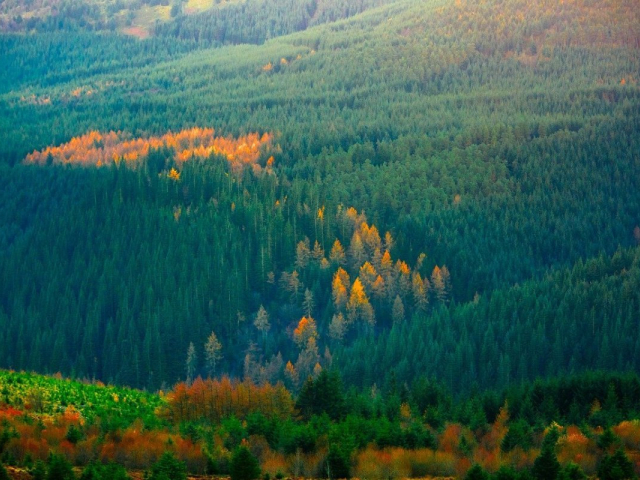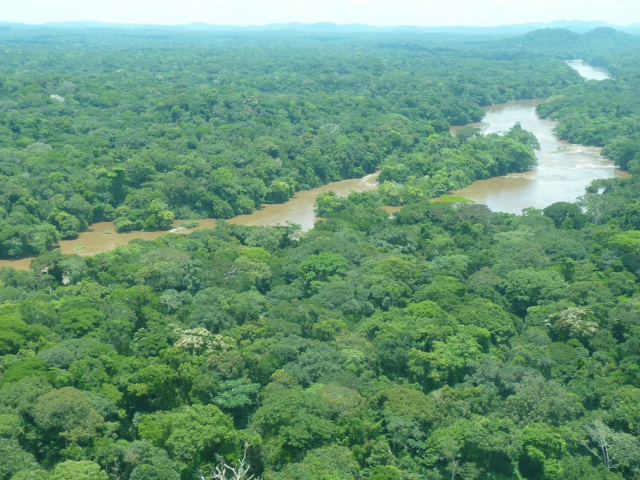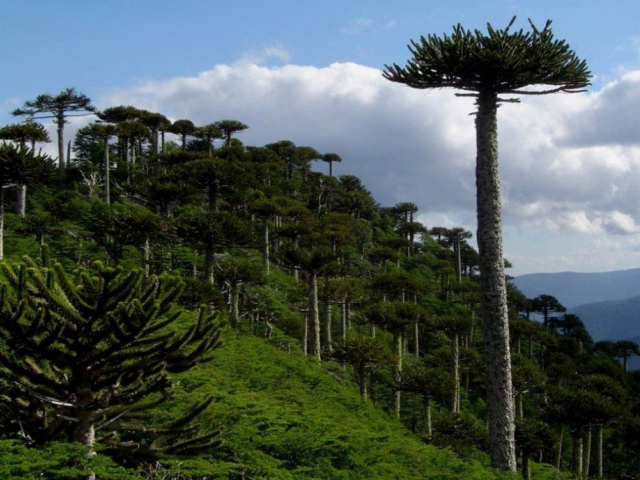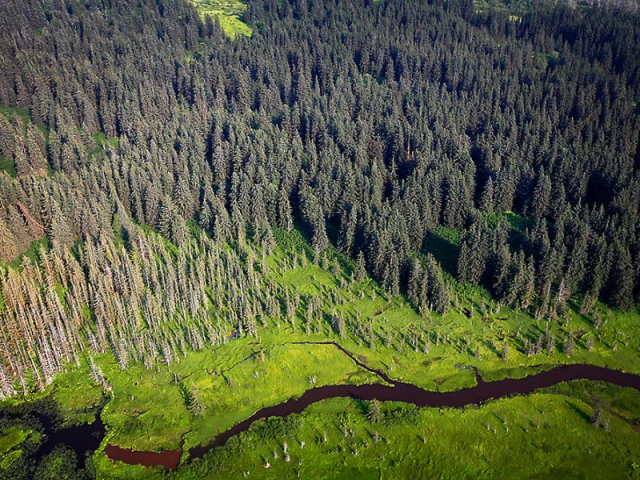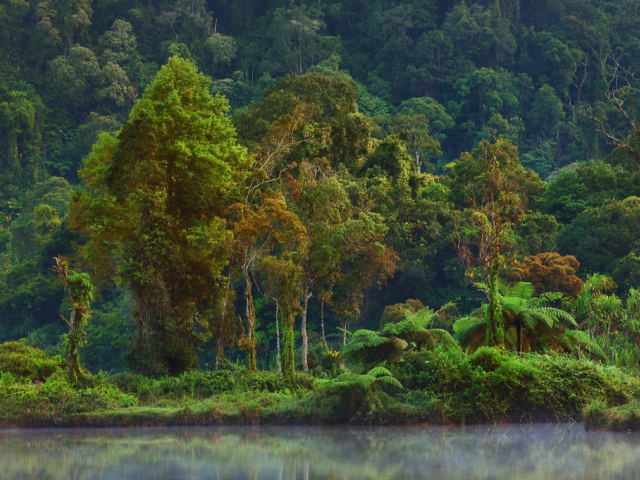Amazon rainforest (5.5 million sq km)
The largest area is covered by tropical forests, such as the evergreen Amazon rainforest, which accounts for 50% of the world's tropical forests. This forest stretches along the Amazon River and spans nine countries: Brazil, Colombia, Bolivia, French Guiana, Suriname, Peru, Ecuador, Venezuela, and Guyana. The Amazon rainforest covers 5.5 million square kilometers. The warm and humid jungles are known for their incredible biodiversity, with over 76,000 species of trees. The fauna includes many reptiles (400 species), some of which are venomous. Caimans and anacondas are common here, and the warm, humid climate encourages the breeding of malaria mosquitoes and sandflies. The Amazon jungle is home to up to 10,000 termite species. These forests absorb a significant amount of carbon dioxide, helping to improve the planet's climate. Scientists are still discovering new species of animals and plants in this vast forest. However, the area is steadily shrinking due to frequent deforestation.
East Siberian Taiga (3.9 million sq km)
The second-largest forest in the world covers an immense area in the basins of Siberia's main rivers—the Lena and the Yenisei—stretching 1,600 kilometers from north to south. The East Siberian Taiga is located in Russia (Krasnoyarsk Krai, Yakutia). The climate here is harsh: winter temperatures drop to -60°C, and in summer, they rise to +40°C. Larch trees dominate the taiga along with spruces, pines, firs, and cedars. The taiga's flora includes 2,400 plant species, many of which are listed in the Red Book. Among them are the large-flowered lady's slipper, windflower, devil's club, rhododendron, and juniper. The taiga is home to numerous animals, including wolves, arctic foxes, foxes, wolverines, and musk deer. The Barguzin sable is considered the most unusual inhabitant of this area. The brown bear is traditionally seen as the master of the Siberian taiga, and the lynx is the only big cat that thrives here.
Congo rainforest (1 million sq km)
The third-largest forest on the planet spans five African countries: the Democratic Republic of Congo, Gabon, Cameroon, Congo, and the Central African Republic (CAR). Two-thirds of this giant forest area is in the Democratic Republic of Congo, Africa's largest country. The entire area is so densely covered with vegetation that only 1% of sunlight penetrates it. The average annual air temperature here is 25°C. The Congo rainforest holds many dangers, including wild pygmy tribes like the Mbuti and Korubo. These dense jungles are home to 12,000 animal species, 1,000 of which are endemic, found only along the Congo River. Among them are the dryas monkey, okapi, water civet, and the pygmy bonobo chimpanzee. Additionally, gorillas, colobus monkeys, and hippos live here.
Valdivian forest (250,000 sq km)
On the west coast of South America lies a massive forest larger than the United Kingdom. It spans the territories of Chile and Argentina. Species that thrive in the wet and cool climate, such as the evergreen luma, 60-meter-tall Fitzroya, and araucaria trees, along with the bright pink-flowered lapageria (Chile's national flower), grow in this region. The local climate is heavily influenced by western winds and ocean currents. The Valdivian forests experience rain year-round, and the temperature difference between winter and summer does not exceed 7°C. In the mornings and evenings, thick fog envelops this vast area. The Valdivian forests are home to both Antarctic and tropical flora and fauna, including rare species of bamboo and ferns. Unique animals, many of which are endemic, inhabit these forests: the monito del monte, the world's smallest deer called pudu, and the spotted Chilean cat known as kodkod.
Tongass National Forest (69,000 sq km)
Across the ocean in the United States, there are also vast forests. The Tongass National Forest occupies the southeastern part of Alaska, covering about 1,000 islands of the Alexander Archipelago and extending to the barren cliffs and glaciers of the Coast Mountains. This dense forest is home to rare cedars and spruces, as well as brown bears, wolves, and deer. Bald eagles, a regional symbol, nest here. Terns also nest on the archipelago's cliffs. Despite the remote and inaccessible nature of these protected areas, about 1 million tourists visit each year. The US National Forest includes 19 protected areas. Special centers, programs, experienced instructors, and guides are available for tourists. Experts call the Tongass Forest a true gem of untouched nature. However, about 40% of this unique area is uninhabitable, including cliffs, swamps, and mountains covered in ice year-round.
Sumatran lowland rainforests (25,000 sq km)
The central part of Indonesia's largest island, Sumatra, is covered with impenetrable tropical forests. The majority of this area is home to unique plants. These forests once stretched along the coast, but due to deforestation, they have shifted to mountainous regions. In the dense thickets of giant figs, lianas, palms, and ferns, tigers, rhinos, buffaloes, monkeys, large snakes, and about 600 species of birds live. According to experts, most figs, lianas, palms, and bamboo reach heights of 60 meters. The lower tier is occupied by tree ferns and various shrubs. The plain is home to the astonishing alang-alang grass. Closer to the coast, mangrove forests dominate. Many endemic species live here, including gharials, flying dragons, and several types of large snakes. Sumatran tigers and orangutans are on the brink of extinction. Thanks to this biodiversity, the Sumatran forests are included in the UNESCO World Heritage List.
-
Grand Choice
Contest by
InstaForexInstaForex always strives to help you
fulfill your biggest dreams.JOIN CONTEST -
Chancy DepositDeposit your account with $3,000 and get $5000 more!
In November we raffle $5000 within the Chancy Deposit campaign!
Get a chance to win by depositing $3,000 to a trading account. Having fulfilled this condition, you become a campaign participant.JOIN CONTEST -
Trade Wise, Win DeviceTop up your account with at least $500, sign up for the contest, and get a chance to win mobile devices.JOIN CONTEST





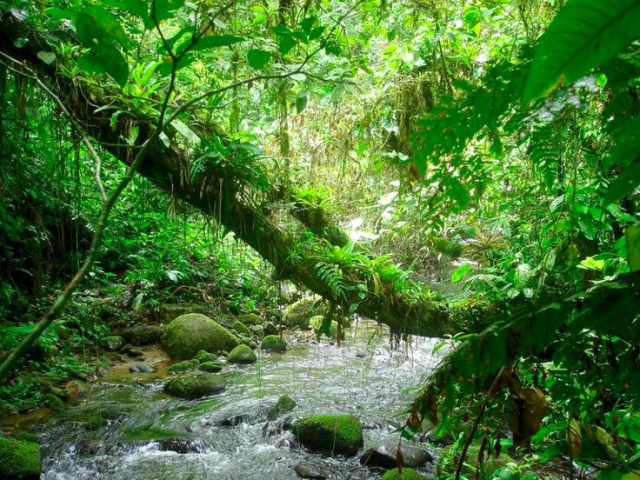
 280
280 6
6